The five best video games of 2021
Tom Breedveld

Scène uit Milocrorze: A Love Story (Ishibashi Yoshimasa, 2011).
It’s a busy life. I’m technically doing three studies, I’ve almost finished my first film project, I’ve started a part-time job and in February, I’m going to be a student assistant. Covid-19 certainly hasn’t led to me ‘wasting my time’, as I hear so many people complaining about.
Unfortunately, that means I don’t really have time for video games (even though I just spent my first paycheck on a whole batch of new ones). On top of that, 2021 was a bit of a disappointment with regards to new releases, not helped by a multitude of delays because of the whole pandemic situation.
However, some nuggets are found among the mud, and so I bring you the five best games of 2021 – I apologize for my own delay; let’s blame Corona.
5. Nier Replicant ver.1.22474487139… (PlayStation 4, Xbox One, PC)
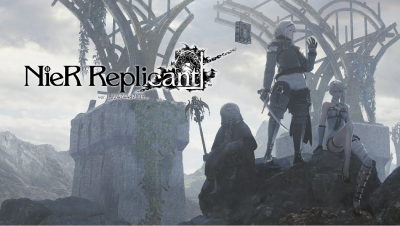
I used to dislike JRPG’s – Japanese Role Playing Games – immensely, even though I grew up with Kingdom Hearts (but since that was a cooperation with Disney, a lot of Americanization must have taken place to make the whole thing more palatable to me. Even so, I’m hesitant to relive these games from my youth, as I’m scared they won’t hold up).
Recently, though, I am finding some enjoyable diamonds in the rough in this genre. I’m a big fan of the Yakuza-series of games, which mix Japanese soap opera with Takeshi Kitano’s violence and grit as you take the role of a member of the Japanese mafia and explore an incredibly faithful (so I’m told) rendition of Tokyo’s different districts (I consider Yakuza 5 to be a Christmas game now, as you dress up as Santa in one of the side missions and give guns to little children).
Japanese developer Suda51’s bizarre games also tickle my fancy, I play everything by Hideo Kojima after rejecting him for years, and a couple of years ago we got the beautifully post-apocalyptic Nier: Automata, which follows two androids after the death of humanity, who pontificate upon their (lack of?) souls while fighting a proxy war with alien machines and being dressed like French maids. Automata has to be finished multiple times to see all endings and gets more and more strange along the way. It’s a sequel to a spin-off from the famous Drakengard series, which I have never heard of.
And now things get weird. Automata is a sequel to a game called Nier, which was released in Japan as both Nier: Replicant and Nier: Gestalt, depending on which console you played it on. The only difference was whether the main characters were brother and sister or father and daughter. In the West, we only got Gestalt (simply called Nier here), where the main character is a dad. There’s an interesting phenomenon in Western games, where a relationship between an older man and a younger woman almost always becomes a reflection on fathers and their little girls. This ‘dadification of video games’ is a real, academically discussed phenomenon and probably has something to do with gamers growing up and having kids of their own.
In any case, Nier Replicant ver.1.22474487139… (the bizarre title is apparently the square root of 1.5, as the game is neither a remake nor a remaster, but ‘something in between’) is the first time Westerners can play Nier in the role of an older brother to a younger, naïve sister. It seems to me this was the way the game was intended to be played in the first place, certain scenes and interactions making a lot more sense if both characters are lost children without much worldly experience, and youthful personages being much more popular in Japanese games anyway. Some scenes become borderline incestuous if you’re supposed to be a father, which we apparently do not have a problem with in the West.
The world is gorgeous, the storyline is completely daft, the characters are strange and almost uncanny. But it works. The weird writing is a reflection on humanity’s ability to try, try again, and even though I hate melodrama I can’t help but be enamoured. Combat leaves something to be desired, but the game switches between so many different styles of bombastic violence that things never turn complacent. Certainly worth a try.
4. Little Nightmares II (PC, Stadia, Nintendo Switch, PlayStation 4, Xbox One)
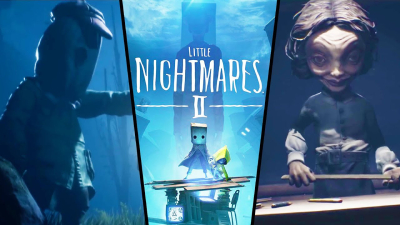
I believe I put the first part of Little Nightmares on my list of best games a couple of years ago, and part two, after a long wait, gets the same honour from me. It remains vague whether this second part is a sequel or a prequel, certainly giving a dreamlike state to the fairy tale-world of Little Nightmares II as you walk through diorama’s of rotted woods, abandoned hospitals and rusted cities.
You play as Mono, a young boy who wears various oversized hats to keep his face covered, as he hides from insane foresters, grublike surgeons and hypnotized urbanites with hollow faces as he fights to reach a mysterious tower, helped by a young girl with a disturbing calmness about her.
Sometimes the controls become frustrating, leading to ‘what-killed-me’-syndrome, but the game is short and sweet enough that it isn’t a big problem. You’ll mostly be focused on the art, character design and creepy soundtrack anyway.
If I may refer to ‘ludonarrative dissonance’ (a term coined by Clint Hocking after playing BioShock which refers to the effects of the story not being reflected by the effects of gameplay or vice versa), I only consider two instances of gameplay to truly combine story and interaction and break with the dissonance in all my years of gaming. Usually, gameplay either ‘completes’ and gives a cutscene or text as a reward which continues the story, or progressing through a virtual world leads to greater understanding of the situation at hand which allows for proper use of gameplay.
In Portal 2, a puzzle game based on teleportation, the ending is a true ‘Eureka’-moment for the player and allows him to finish the story by applying his knowledge of portals at a climactic moment. In Little Nightmares II, Chapter One ends with Mono and the little girl working together on initiative of the player (cooperation being something taught and used during the chapter to progress) to pull down a giant shotgun from the wall and aim it at the door of the shed they are hiding in. Time is of the essence, as a serial killer is trying to break through. Pulling the trigger in the nick of time, the blast deafens Mono and Six for a while, as the impact of the moment dawn on the player. They are killers now, they are not entirely helpless, and there is a long way to go yet. The body of their kill is never seen. The next scene plays out in silence and takes several minutes, as Mono and the girl float on a door across a sea of fog and televisions until they reach a beach and a shifting city, where more horrors await. Amazing.
3. Resident Evil Village (PC, PlayStation 4, PlayStation 5, Stadia, Xbox One, Xbox Series X/S)
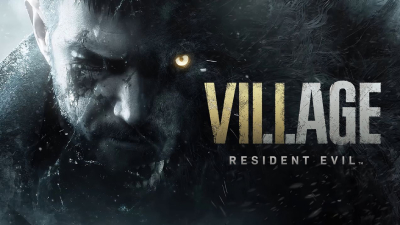
Resident Evil has long outgrown its humble beginnings as a 1996 zombie survival horror game, directed by personal favorite Shinji Mikami (I love the name Shinji. In a distant and as yet unrealizable future, I might name a son that. Shinji Mikami is coming out with a new game in the future that I’m excited about called Ghostwire: Tokyo. Also check out his other cult hits, Dino Crisis, Vanquish and The Evil Within).
In this newest part (officially part eight, but that doesn’t count several good spin-offs), werewolves and vampires seem to have entered the mix, also created by the genetic engineering shenanigans of the evil Umbrella Corporation. A direct sequel to part seven, which many considered a return to scary and disgusting form (and heavily indebted to 70s horror, especially The Texas Chainsaw Massacre), part eight is more actionized, beginning with series mainstay Chris Redfield murdering main character Ethan’s wife and kidnapping Ethan and his baby daughter. Dropped in an Eastern European village, Ethan must save his baby from lycans and a blue-blooded vampiric family.
Lady Dimitrescu, the matriarch of the vampires, immediately became an object of desire for half the internet. At three metres tall, conventionally attractive and throwing Ethan around like a ragdoll during confrontations, apparently she is just what most gamers (male and female) have been looking for. Fun fact: her butt holds more polygons than the entirety of Resident Evil 1 – a fact the internet told me.
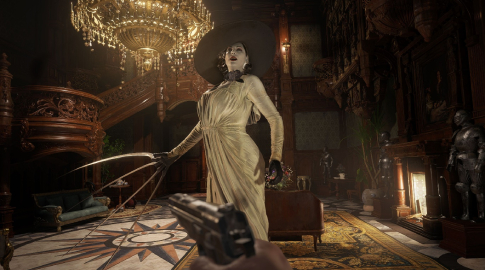
The game is gorgeous, traversing the city streets is claustrophobic and intense, and the monsters look cool. Another worthy Resident Evil-game.
2. Deathloop (PC, Playstation 5)
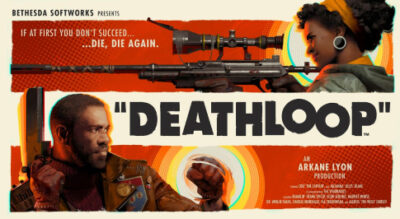
Bethesda is on a roll again, this time buying Arkane Studios, known for their stealth assassin-game series Dishonored. Arkane seems to like the concept quite a lot, as Deathloop also follows a stealthy assassin with advanced technology and the capability to perform superhuman feats. The twist, this time, is that every 24 hours at the stroke of midnight, the world resets and the day starts all over again.
A secret organisation has discovered an island where time resets, and has started a cult that holds an eternal party on the island where anything is allowed. Since the day is continually reset, there are no consequences for anyone. Run by Julianna, who uses the place as her own personal murder playground, she will do anything to keep the place going. You play as assassin Colt, who wishes to escape the island which involves killing eight Visionaries including Julianna, as their existence keeps the time loop intact.
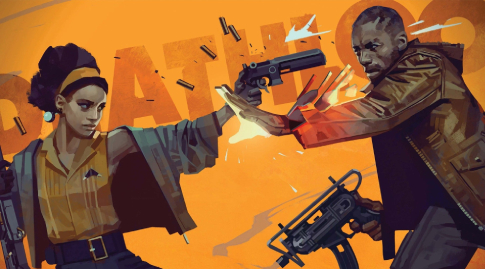
The gameplay should be incredibly convoluted and arguably uninteresting, since the day repeats again and again. Fortunately, the world building in Deathloop is perfect. You are given the freedom to choose the order in which you kill the eight Visionaries, and changing the order means changing the location in which you find them and the methods you will need to employ to get to them. Complicating the issue is the fact that Julianna is aware of you and can adjust her strategies to stop you.
The world looks gorgeous and gives me an underground comix vibe, looking something like a mix between BioShock’s art deco, Dishonored’s impressionism and the fast-paced action of the new Wolfenstein-games. The gameplay is perfect, but no surprise, since it’s pretty much Dishonored in a new coat. If you like those games, time travel, or cool stealth, you’ll love this.
1. Halo Infinite (PC, Xbox One, and Xbox Series X/S)

Academic scholar Grant Tavinor, specializing in Game Studies, once said that although games held more artistic relevance than most institutions were willing to admit, ‘most of their writing is still decidedly B-level. It will be a long time before games come close to the lowest of literary capability.’
I have made it my life mission to disprove this statement. It cannot be denied that video game writing is often bad, but hey, the same goes for movies and books. Finagle’s Law: 90 percent of anything is crap. It attests to the flexibility of video games that they allow immersion and entertainment even though their story structure is subpar.
And often, the writing is better than it sounds at first, mired as it is by standard tropes and clichéd endings and characters. I often mention Halo as a prime example. What looks like a standard first person shooter (although one of the most influential ones ever made) is actually a quite deep and introspective space opera. Even in part one, when main character Master Chief was a flat character made to kill and destroy, and his A.I. partner Cortana was a sexy blue babe for no particular reason, the death of Captain Keyes as he is subsumed by a hivemind of parasites is heartbreaking, as we watch him desperately try to keep the memories of his daughter while his brain is destroyed.
Part two introduced the Gravemind, a monstrous villain who speaks in dactylic pentameter. Part three, with a villain voiced by Terence Stamp, has some Shakespeare-worthy dialogue as he tries to destroy all life in the galaxy. I still quote him when people ask me if there’s something they can do for me: ‘I will admit… I need your help. But that secret dies with all the rest.’ And in part four, when Cortana sacrifices herself to save Master Chief, has a strong and tear-jerking ending where Master Chief says goodbye to her and discusses his function in life with a fellow soldier: ‘Our duty as soldiers is to protect humanity, whatever the cost.’ The General answers: ‘You say that like soldiers and humanity are two different things. We’re not machines.’
This leads to introspection on Master Chief’s part, and evolves his character in an interesting way. Halo 5 was quite badly received, especially the twist of Cortana coming back as a corrupted A.I. (seriously, on a long enough timeline the morality of any artificial construct turns to zero in sci-fi). I liked the twist, as Master Chief becomes torn between having to fight his closest ally and being confronted with his own limitations. A victim of a genetic engineering program that worked with child soldiers, Master Chief dislikes Cortana’s idea of taking away humanity’s free will (another standard sci-fi trope): ‘You mean like the army did to me.’
In Halo Infinite, Master Chief follows his duty of protecting Earth by fighting an enemy that is actually to strong for him, and he is helped by a copy of the Cortana A.I. which he finds under circumstances I do not wish to spoil. The construct is called ‘Weapon’ and she seems more naïve and good-natured than Cortana at first (another example of video game ‘dadification’, as she becomes Master Chief’s ward of sorts, and a good indication of Jen Taylor’s amazing voice acting). When Weapon finds out her origins, she asks Master Chief if his mission was to protect Cortana. ‘Still is,’ is his response.
I a bit nonplussed by the gameplay of Halo. Shooting things is fun and the grappling hook is a nice addition (although also rather standard video game fare), so there’s not much to complain about or be impressed by. But the storyline is nice, emotional and personal. Master Chief’s face is never seen, but the ever increasing scratches and dents on his impressive armor tell a thousand tales. I’m ready to hear more.
Tom Breedveld (1994) once saw a poodle crossing the street on its own, and wonders if it meant anything.
Games, Tom Breedveld, 17.01.2022 @ 17:01






 RSS
RSS